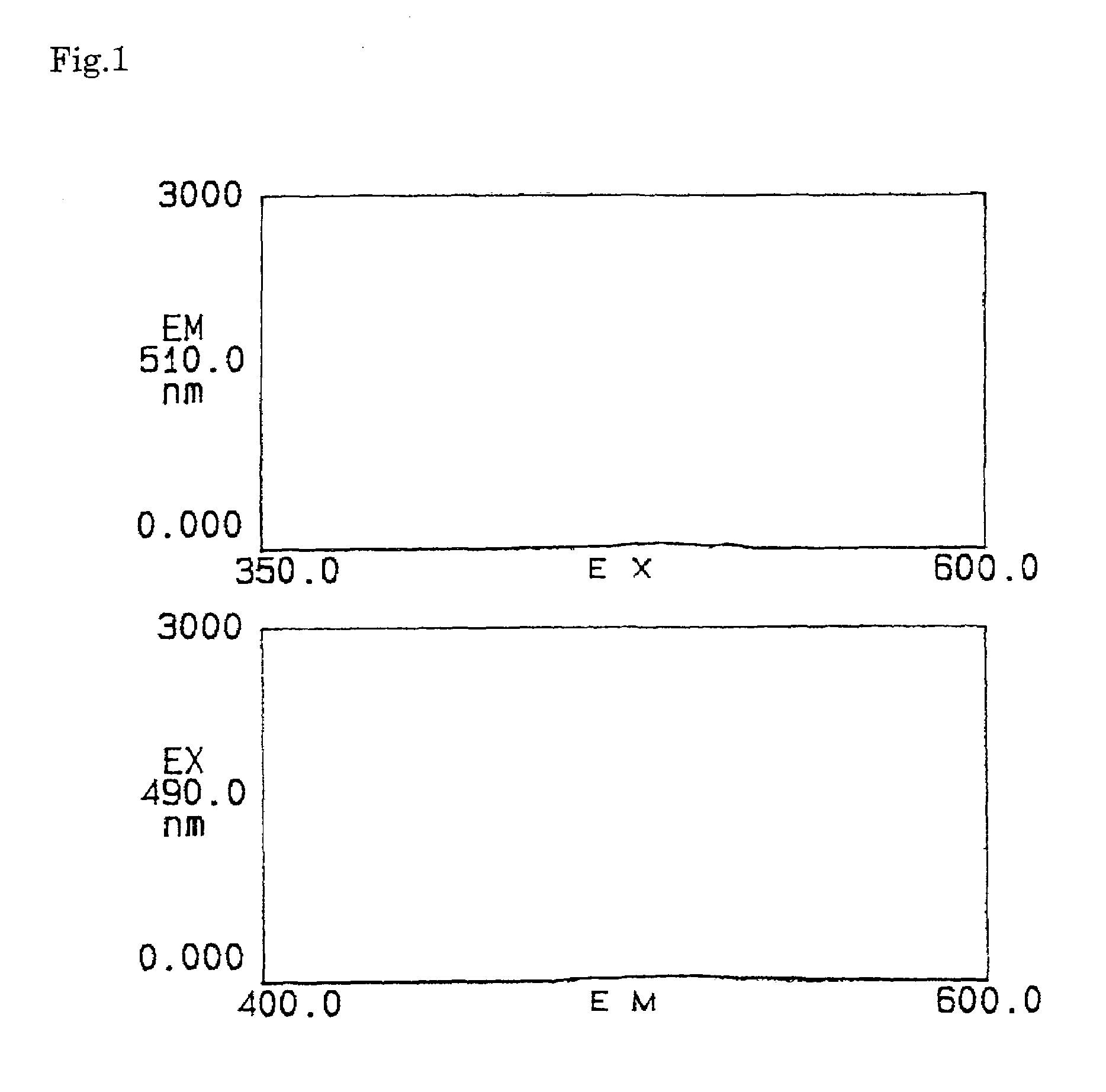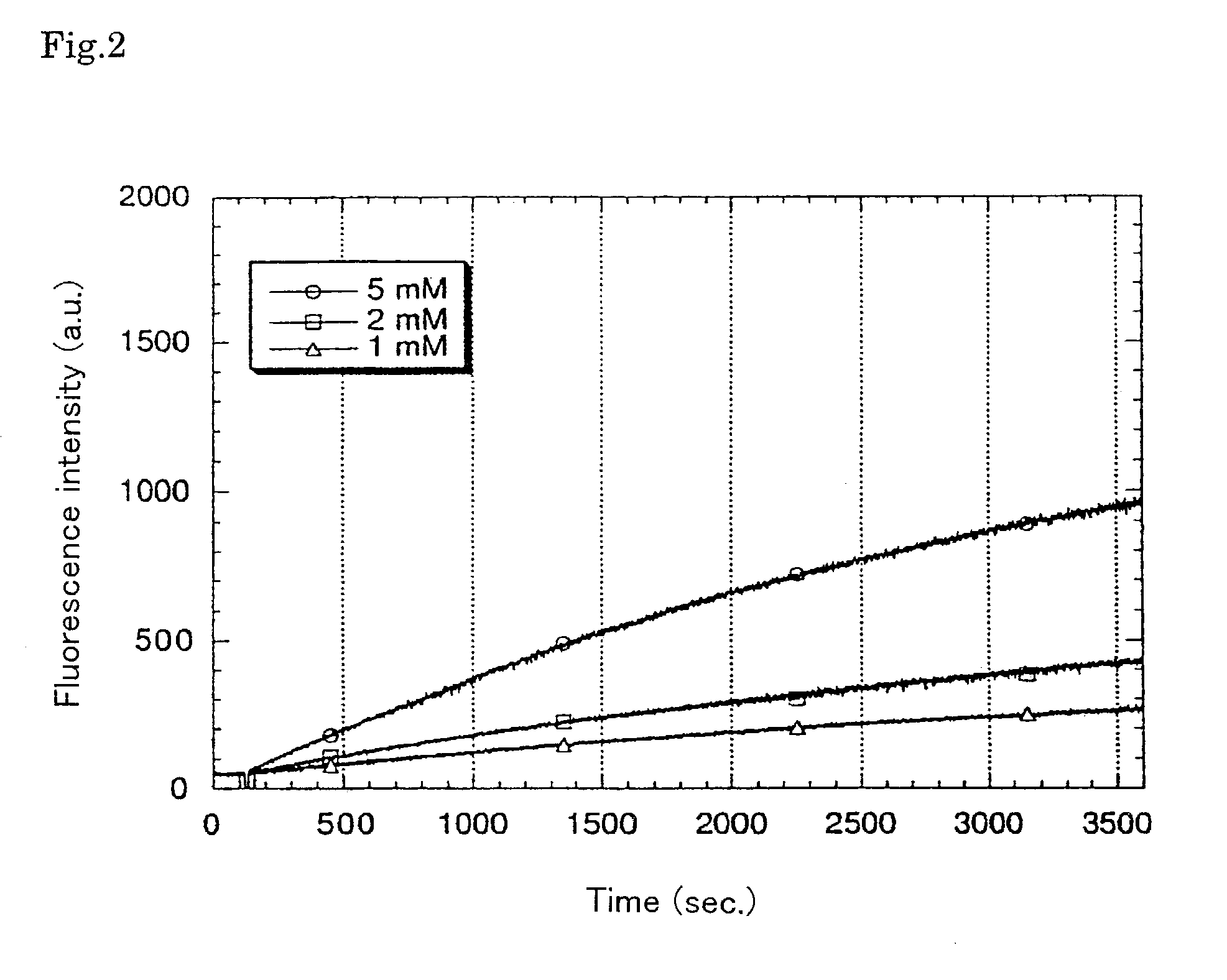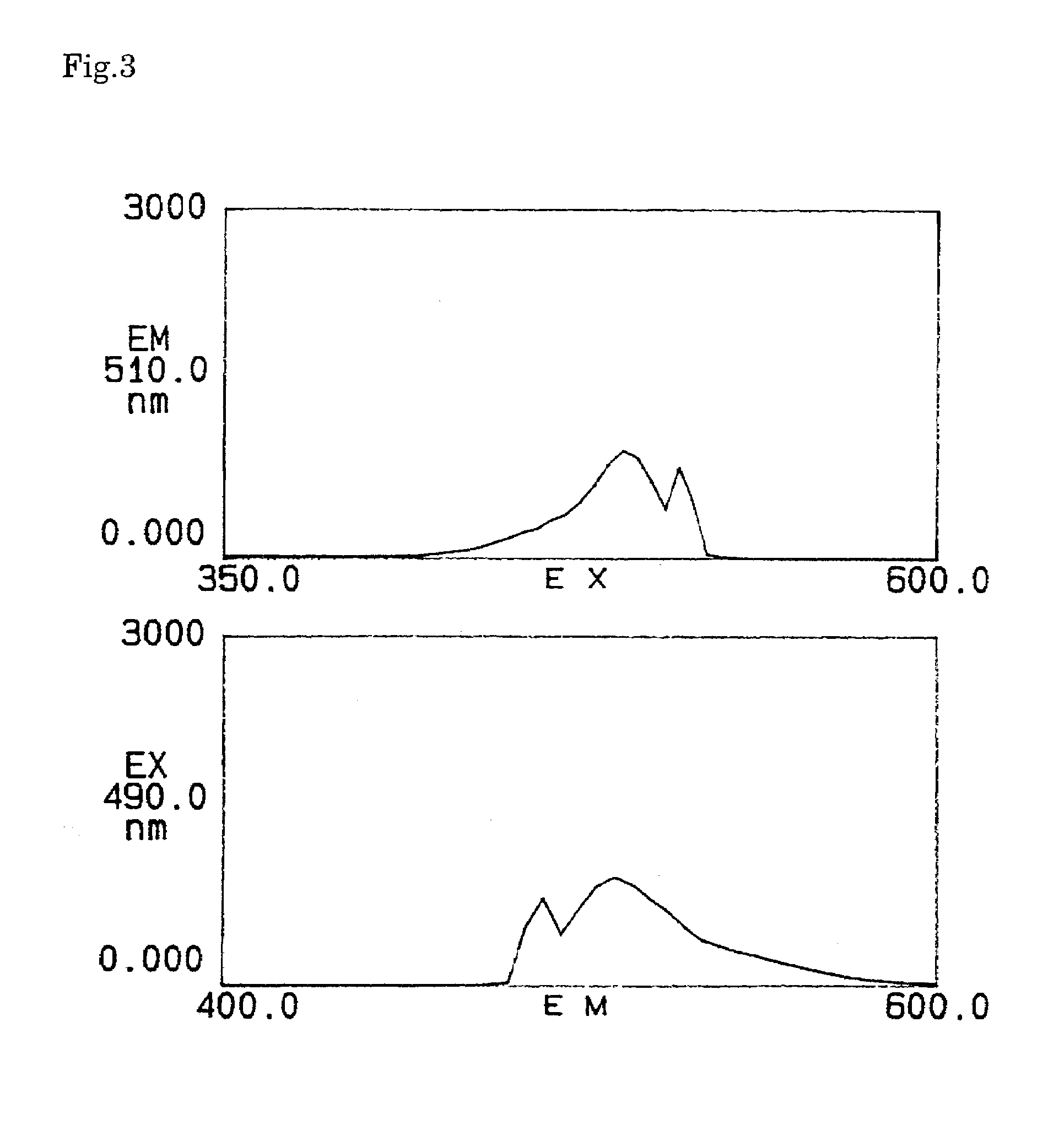Reagents for the quantitation of active oxygen
a technology of active oxygen and quantitation method, applied in the direction of biochemistry apparatus and processes, analysis using chemical indicators, organic chemistry, etc., can solve the problem of unable to measure and evaluate at individual cell level, the fundamental difficulty of using living cells as measurement samples, and the method of species measurement, etc. problem, to achieve the effect of accurate and convenient measurement of reactive oxygen
- Summary
- Abstract
- Description
- Claims
- Application Information
AI Technical Summary
Benefits of technology
Problems solved by technology
Method used
Image
Examples
example 1
Synthesis of ss-3 (a Compound Represented by General Formula (I) in Which R1 is a p-aminophenyl Group)
1) Synthesis of 4-Iodoacetanilide
[0037]4-Iodoaniline (11.0 g, 50.4 mmol) was dissolved in 60 mL of ethyl acetate and the solution was added with 10 mL of acetic anhydride (10.8 g, 106 mmol) and 7.8 mL of pyridine (7.65 g, 99.4 mmol), and the mixture was stirred at room temperature for 2 hours with an equipment of a CaCl2 tube. A solvent was evaporated under reduced pressure to obtain 4-iodoacetanilide (yield: 13.0 g, percent yield: 99.0%).
[0038]m.p.: 174.5 to 175.5° C.
[0039]1H-NMR (300 MHz Acetone-d6); δ 2.04 (s, 3H), 7.46 (dd, J=9.0 Hz, 2.2 Hz, 1H), 7.60 (dd, J=9.0 Hz, 2.2 Hz, 1H), 9.21(br, 1H)
[0040]EI Mass (M)+=261
2) Synthesis of pre ss-3 (Acetyl)
[0041]Potassium t-butoxide (123 mg, 1.10 mmol) was dissolved in a mixed solvent of 8 mL of benzene and 3 mL of methanol. The solution was then added with 7-hydroxycoumarin (196 mg, 1.21 mmol) and stirred for dissolution. The solvent was t...
example 2
Synthesis of ss-1F (a Compound Represented by General Formula (II) in which R2 is a p-hydroxyphenyl Group and R3 is a 2-carboxyphenyl Group)
1) Synthesis of 4-tert-butoxyiodobenzene
[0049]4-Iodophenol (18.7 g, 85.1 mmol) was dissolved in 150 mL of dichloromethane and the solution was bubbled with isobutene until saturation under ice cooling. The mixture was then added with 10 drops of concentrated sulfuric acid and stirred at room temperature overnight. The reaction mixture was washed twice with a 50 ml aqueous solution of 2 normal sodium hydroxide, and the organic layer was dried over Na2SO4, and the solvent was evaporated under reduced pressure to obtain 4-tert-butoxyiodobenzene as a white crystal (yield: 16.6 g, percent yield: 70.7%).
[0050]m.p.: 40.0 to 41.5° C.
[0051]1H-NMR (300 MHz CDCl3); δ 1.33 (s, 9H), 6.75 (dd, J=9.0 Hz, 2.4 Hz, 2H), 7.55 (dd, J=9.0 Hz, 2.4 Hz, 2H)
[0052]EI Mass (M)+=276
2) Synthesis of pre ss-1F (t-butyl)
[0053]Sodium fluorescein (3.75 g, 9.97 mmol), cuprous chl...
example 3
Synthesis of ss-3F (a Compound Represented by General Formula (II) in which R2 is a p-aminophenyl Group and R3 is a 2-carboxyphenyl Group)
1) Synthesis of 4-iodotrifluoroacetanilide
[0061]Trifluoroacetic anhydride (36.0 ml, 216 mmol, 45.0 g) and pyridine (17.0 ml, 210 mmol, 16.6 g) were added to a solution of 4-iodoaniline (25.0 g, 114 mmol) in 100 ml of dichloromethane under ice cooling, and the mixture was stirred under ice cooling until fuming and heat evolution were terminated. The mixture was then immediately returned to room temperature and continuously stirred for 19 hours. After the solvent was evaporated under reduced pressure, the residue was purified by chromatography on silica gel (eluent: ethyl acetate) to obtain 4-iodotrifluoroacetanilide as a light brown solid (yield: 34.1 g, percent yield: 94.8%).
[0062]m.p.: 148.5 to 149.0° C.
[0063]1H-NMR (300 MHz, CDCl3 / TMS); d 7.35 (d, J=8.8 Hz, 2H), 7.71 (d, J=8.8 Hz, 1H), 7.90 (br, 1H)
[0064]EI Mass (M)+=315
2) Synthesis of N′-triflu...
PUM
| Property | Measurement | Unit |
|---|---|---|
| pH | aaaaa | aaaaa |
| pH | aaaaa | aaaaa |
| fluorescence wavelength | aaaaa | aaaaa |
Abstract
Description
Claims
Application Information
 Login to View More
Login to View More - R&D
- Intellectual Property
- Life Sciences
- Materials
- Tech Scout
- Unparalleled Data Quality
- Higher Quality Content
- 60% Fewer Hallucinations
Browse by: Latest US Patents, China's latest patents, Technical Efficacy Thesaurus, Application Domain, Technology Topic, Popular Technical Reports.
© 2025 PatSnap. All rights reserved.Legal|Privacy policy|Modern Slavery Act Transparency Statement|Sitemap|About US| Contact US: help@patsnap.com



